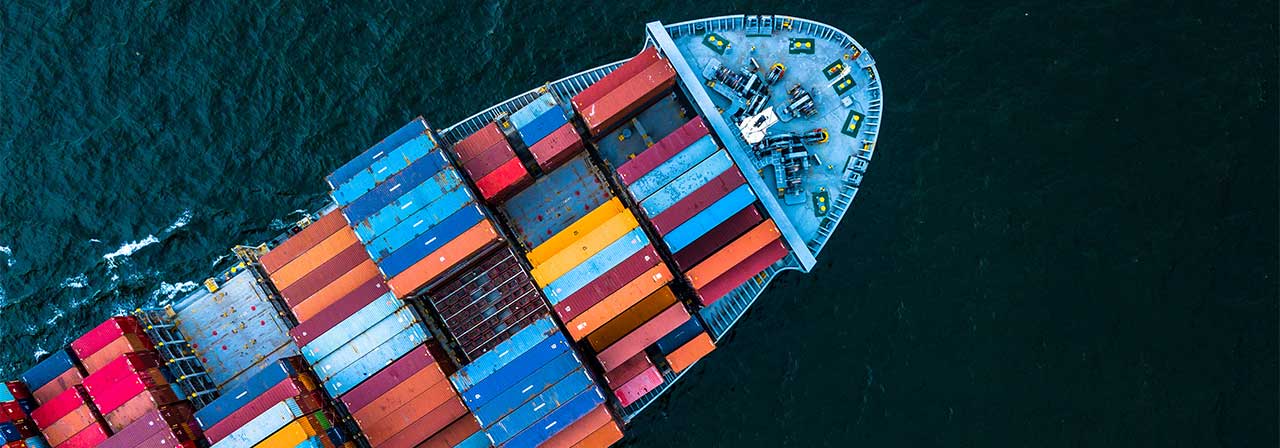The road ahead for the supply chain and logistics sector in Vietnam
The logistics market remains resilient amidst challenges from the global pandemic
According to the Vietnam Logistics Report 2020 from the Ministry of Industry and Trade, the global logistics sector has been seriously affected by the Covid-19 pandemic. Although governments work to maintain the supply chain of goods and give particular priority to the circulation of essential goods, due to disease control measures like social distancing and work-from-home orders, there are times when most commercial markets are paralyzed.
As an export-oriented economy, the effects are deeply felt for Vietnam. The Ministry of Industry and Trade report also revealed that manufacturing industries, such as textiles and garments, which relied heavily on the import of raw materials from Chin, had had to halt production. According to the Department of Customs (published on October 12, 2020), the country's export in the first 9 months of 2020 reached 202.57 billion USD, up slightly by 4.1% y-o-y. The good news is that the domestic business sector continues to record growth in export value. This will be a great driving force for the development of logistics services for import and export activities.
For Asia Pacific, office and retail rents, plus capital values have declined in 8 out of 10 key markets in 2Q 2020, while logistics rents were largely flat. JLL’s latest report on logistics in Asia Pacific reveals the key trends that will continue to drive the growth of investment into the logistics sector, and why investors are still keen on it, despite persistent short-term Covid-19 headwind.
Rapid urbanization and the rising middle class is among the biggest drivers for growth. Demographic forces drive demand for commercial real estate, and this is a major factor that underpins demand in Vietnam specifically and Asia Pacific (AP) in general. Around 35% of Vietnam’s population currently live in urban areas, up from 29% just about a decade ago. As the market matures, the level of logistics space required to serve the population is likely to rise, leading to greater requirements for logistics space. Vietnam’s substantial middle-class population, coupled with rising income levels, are expected to support consumption levels in the region.
JLL’s report also pointed out that e-commerce is a positive tailwind for demand for logistics real estate. Typically, e-commerce firms use more logistics space than brick-and-mortar retailers. This is largely due to a more extensive product range, greater inventory levels, larger outbound shipping space requirements, and increased reverse logistics ( returns process). E-commerce now accounts for around 20% of all retail sales in AP as compared to 14% globally, while Vietnam is currently one of the fastest growing e-commerce markets in Southeast Asia. Revenue from e-commerce was estimated to have reached 4.07 billion USD in 2015, increasing to 6.2 billion USD in 2017. By end of 2020, the market is expected to reach about 13 billion USD, double the level in 2017.
Looking for more insights? Never miss an update.
The latest news, insights and opportunities from global commercial real estate markets straight to your inbox.
In recent years, the supply chain has become increasingly consumer-driven. Delivery speed has always been a major factor in the buying decision, with major online retailers offering same day delivery options. To keep ahead of the curve, retailers and logistics providers need to respond to changing customer needs. A successful last mile strategy will need to implement innovative solutions, modern processes, digital transformation and the latest technological developments, all of which will have significant implications for occupiers’ real estate strategies.
Trang Bui, Head of Markets, JLL Vietnam, comments on the trend: ‘The Covid-19 epidemic is accelerating automation in the logistics sector and will become a major trend in the near future. Tenants are upgrading from outdated, often small and owner-occupied facilities to newer facilities in premium locations. Simultaneously, the consolidation of logistics operations into more modern facilities is improving efficiency and reducing the overall logistics costs of tenants. Growth in other industries will also support 3-party-logistics market expansion, including growth in the food and beverage, healthcare and pharmaceuticals, and office and technology equipment industries.’
JLL experts also shared that cold storage might soon become a rising star in this sector. Investors were already hot on cold storage facilities as online groceries skyrocketed during the pandemic, requiring more refrigerated warehouses close to the customers. There has been a spike in short-term logistics requirements directly linked to the immediate impact of the pandemic, particularly in relation to the significant expansion of online grocery spending, and the need to support critical health services such as vaccines distribution. As all the leading vaccines require very low temperature to remain effective, cold storage for the new Covid-19 vaccines might be the next big thing in supply chain and logistics industry.
Investment Opportunities
However, in order to achieve growth goals, Vietnam's logistics industry will still have to overcome many challenges. In order for Vietnam to enter the next phase of the industrial/logistics cycle and become more competitive and move ahead of regional peers, it is vitally important to continue investing on the infrastructure network, including both highways and utility networks, and renewable energy. Also, Vietnam's cross-border trade process still needs significant improvements in both processing time and costs.
To download the The Logistics Sector in AP: The Road Ahead, please click here.
聯繫 Paul Fisher
Country Head, Vietnam, JLLWhat’s your investment ambition?
Uncover opportunities and capital sources all over the world and discover how we can help you achieve your investment goals.




